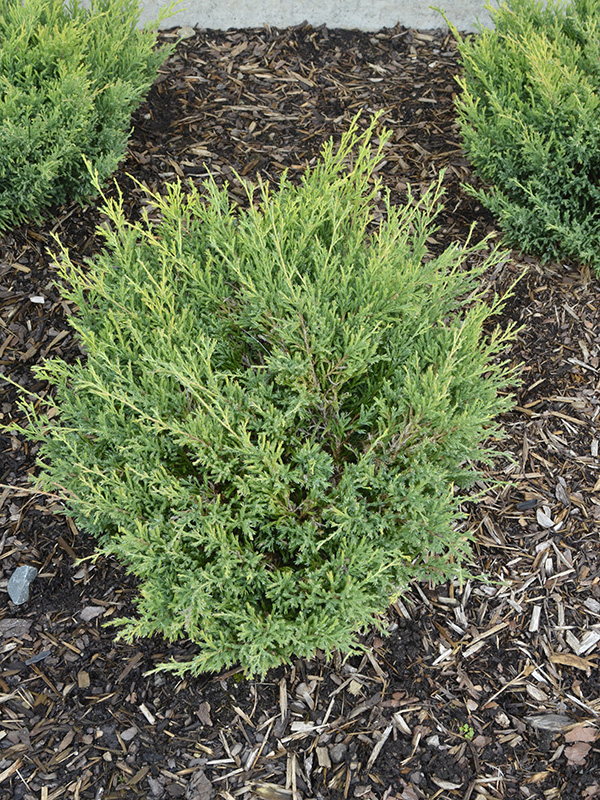
Woody > Juniperus > Juniperus horizontalis > Juniperus horizontalis 'Lime Glow'
Juniperus horizontalis
'Lime Glow'
Lime Glow Juniper
Mike's
Opinion


"
Lime Glow Juniper is an excellent ground cover with its lime green foliage, vase shape and fast growing habit. It prefers dry, sandy soils, making it perfect for rock gardens and foundations. It is also pollution tolerant for city environments and a very low maintenance plant with only light pruning required to control its spread.
Michael Pascoe, NDP., ODH., CLT., MSc. (Plant Conservation)
"
| Family |
| Cupressaceae |
| Genus |
| Juniperus |
| Species |
| horizontalis |
| Cultivar |
| 'Lime Glow' |
| Category |
| Woody |
| Type |
| Shrub (evergreen) |
| USDA Hardiness Zone |
| 3 - 9 |
| Canadian Hardiness Zone |
| 1a - Requires cool season protection under glass. |
| RHS Hardiness Zone |
| H3 - H7 |
| Temperature (°C) |
| -40 -(-1) |
| Temperature (°F) |
| -40 - 30 |
| Height |
| 15 - 30 cm |
| Spread |
| 30 - 90 cm |
Photographs
Description and Growing Information
Flowering Period
| General Description |
| A dwarf creeping evergreen with chartreuse-yellow, feathery foliage and a vase shape. |
| Landscape |
| A hardy plant that can tolerate hot, dry and sunny locations making it great for use in rock gardens, border edging, general use, and foundations. Lime Glow Juniper is especially suited to erosion control. |
| Cultivation |
| Tolerant of a wide range of soils, however prefers dry, sandy soils. |
| Shape |
| Vase-shaped mound. |
| Growth |
| Slow |
| ID Characteristic |
| Fine scale-like foliage form vase-shaped mounds and is known for its chartreuse-yellow juvenile foliage. During the winter the foliage turns a shade of copper-bronze. |
| Pests |
| Susceptible to Phomopsis blight (Juniper blight). |
| Habitat |
| Horticultural origin. |
| Bark/Stem Description |
| Think shredding bark is found on the main branches near the base. Greyish-brown in colour, new growth can have a slight reddish-brown tinge to it. |
| Flower/Leaf Bud Description |
| Buds can be conspicuous, small scales, sharply pointed at the tip and placed opposite or ternate along the branches. |
| Leaf Description |
| Needles are soft and feathery. During the spring they turn greenish-yellow and then turn a coppery-bronze with pink or purple tinge throughout the autumn and winter seasons. The leaves are placed opposite or ternate along the branches and the leaves have pointed tips, 1.5-3 mm in length. |
| Flower Description |
| Dioecious, hidden by the foliage. |
| Fruit Description |
| Fruit is infrequent in production. Male cones are 6.5-8.5 mm across and will shed pollen in the spring. After, pollination, the female cones will develop into small dark blue, rounded berries, 5-7 mm in diameter. |
| Texture Description |
| Older leaves are fine textured, new growth is a medium texture. |
| Notable Specimens |
| The Gardens of Fanshawe College, London, Ontario, Canada. Brookgreen Gardens, Pawley’s Island, South Carolina, United States of America. |


